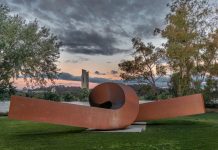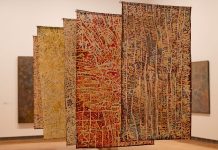Stuart to be captured on brick
Queanbeyan-Palerang Regional Council has announced Ricky Stuart will be the subject of a large mural to be painted on a wall in Queanbeyan’s CBD.
From late last year, QPRC called on the community to nominate people they thought were worthy of being represented in the artwork.
With more than 40 nominations from the community, the story submitted by Dimitri Hantas highlights that community is something close to Stuart’s heart.
Hantas’ admiration for the Raiders’ legend has roots in his own family history.
“Ricky was born in Queanbeyan in January 1967, the same year that my father decided to migrate from Greece and make Queanbeyan home for our family,” Hantas writes.
“We have watched Ricky’s career over the years, and his sporting exploits have brought many happy memories to our family.
“Today as a parent, I have further admiration for Ricky, who I have seen champion the cause for children with autism and devote his personal time and influence to set up respite centres to support children and teenagers with autism.”
Contemporary artist Claire Foxton will being creating the mural on the wall of Queanbeyan’s Bicentennial Hall from 5 April.

NGA explores Māori art
Spanning over 250 years, and featuring portraits of Māori men and women, the National Gallery of Australia’s (NGA) new exhibition, Māori Markings: Tā Moko, explores the tradition of tā moko, the unique Māori art of marking the skin, from its origin through to its contemporary resurgence.
“In the 21st century, body adornment and marking has been embraced by many cultures and heavily influenced by Māori art,” says NGA Director Nick Mitzevich.
“An exhibition celebrating Māori art and culture is long overdue in Australia with an estimated one-fifth of today’s Māori population living here.”
The exhibition includes important early Māori sculptures, 19th century prints, paintings and photography that trace the story of this unique cultural art form.
Māori Markings: Tā Moko continues at the NGA until 25 August.
Acclaimed author named as HC Coombs Fellow
Australian author Gabrielle Carey has taken up residency at The ANU as the HC Coombs Creative Arts Fellow for 2019.
The Puberty Blues co-author lifted the lid on teen sex, drugs and beach culture in south Sydney in that title, and says she has been circling the subject of addiction, mental health and suicide ever since.
“If you look at the last page of Puberty Blues, there’s a list of people who died from suicide or drug overdose in the gang that we hung out with,” she says.
Carey will use her time at ANU to tackle the subject in a new book.
“Psychosis, addiction and how people experience these things has been weighing on my mind for some time. It’s quite a gloomy subject, so I’ve chosen to focus on stories of recovery.
“After decades of talking about de-stigmatising mental health issues, I don’t think we’ve come very far.
“I’ve made contact with the University’s mental health unit and Carers ACT and I’m looking to speak to people about their recovery stories,” she says.
Carey will be available to students throughout her fellowship and will hold a masterclass in writing for PhD students.
Having lived in Canberra in 2017 during a National Library of Australia fellowship, Carey says she was thrilled to learn she had received the HC Coombs Fellowship.
“It’s just heaven. This is what all writers dream of; a weirdly monastic life that you long for but rarely get a chance to live.”
For more:








